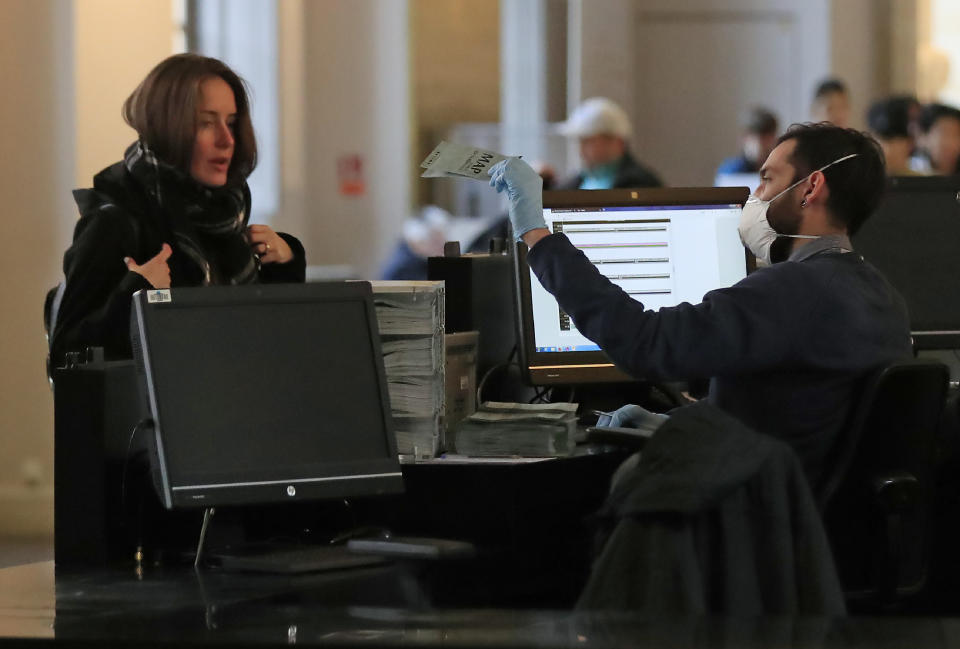Why jobs are critical right now for the economy
The jobs picture is turning bleak, fast. Norwegian Airlines announced today it was laying off 7300 employees. Some five million Chinese workers lost their jobs in that country in the first two months of the year. In the U.S., we’re just beginning to see job losses, and economists are not at all sanguine about the outlook.
Of all the economic factors to watch as the coronavirus wreaks havoc, perhaps the most important is employment or jobs. With business activity beginning to contract significantly, the number of Americans who get laid off, or conversely manage to keep their jobs, will be critical as to how much damage the disease inflicts upon our nation’s economy.
Employment is critical for all economies of course, in China particularly as the government there is hyper-concerned about civil unrest. But even in the U.S., stable employment is core to the underpinning of a healthy economy.
What makes this crisis so difficult is that we have no paradigm to turn to in terms of understanding the effect of a pandemic. AIDS/HIV had nowhere near the economic impact, while the so-called Spanish Influenza outbreak of 1918/19, which killed 50 million people in 18 months, occurred too long ago to offer any salient economic lessons.
So we’re really flying blind here.
Americans who work for large, well-capitalized companies are probably going to end up okay; they have all sorts of benefits and programs to tide them over. The number of employees at Fortune 500 companies is some 28.7 million people, but that’s a global number so figure that about 20 million of them work in the U.S.—out of a total over 130 million full-time employed in the U.S. So that means more than 100 million Americans work for small and medium businesses, (which are much more vulnerable to a downturn and offer employees less protection), or are self-employed, a fast-growing category, more on that in a bit.
MKM Chief Economist and Market Strategist Michael Darda says what he calls the “fiscal authorities” (i.e. Congress), will have to step to provide relief.
“We know the economy is going to be going through a wrenching shock here,” Darda said on Yahoo Finance’s On The Move. “People will get laid off. Businesses are going to have difficulty with cash flow. So perhaps something even along the lines of direct payments to people. It’s an emergency policy, but we have an emergency. So all hands on deck.”

Which jobs are most at risk? Think about businesses which could be hardest hit such as retail, travel, restaurants, and entertainment. So that means cashiers, flight attendants, waiters, and everyone from actors to ticket takers could be in harm's way. Already in New York City you hear of layoffs in the restaurant business as the move to take-out or delivery only.
There are some other workplace issues to consider too. Like safety.
Consider the danger posed by contracting the virus at work, where a strange flip-flop has taken place in terms of safety. Dentistry, which was typically a super-safe occupation, is now considered risky, whereas, logging, historically a dangerous job, is now considered safe, according to this story by the New York Times.
Another change: the vast numbers of employees who now WFH, or working from home. I’ve seen estimates that over 300 million people will be working from home globally by the end of March, which carries an economic disparity wrinkle. While many highly paid workers; lawyers, bankers and coders for instance, can work at home, blue collar employees have no choice but to come to work, both because their jobs require it and because they have no choice but to work. I take the subway to work in New York City and the number of professionals on the trains has dropped significantly, leaving mostly hourly workers.
And then there’s gig economy workers—everything from babysitters to Uber drivers, to contract cleaners and hairdressers. They could be particularly vulnerable because by definition they have no protections such as unemployment benefits or sick leave. The number of gig workers in the U.S, which has ballooned over the past decade, is difficult to quantify although the Federal Reserve estimates that as many as 75 million Americans could fall in that category. Figuring out how to get direct relief in the event these workers need it, will be a huge challenge for the government.
To be sure, there are some bright spots in employment. There is big demand for healthcare professionals. And “...job postings online are rising rapidly for workers with skills in...community response, crisis management and cleaning, studies suggest,” according to USA Today.
But those new jobs may be only temporary and almost certainly won’t offset job losses likely to come. For many Americans, it will be a case of hoping their companies or businesses can keep alive during what will certainly be a difficult stretch.
Andy Serwer is editor-in-chief of Yahoo Finance. Follow him on Twitter: @serwer.
Read more
Here’s what Warren Buffett’s doctors told him about his health
Here's what connects the Crash of 1987 with the Crash of 2020
Read the latest financial and business news from Yahoo Finance

